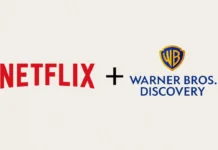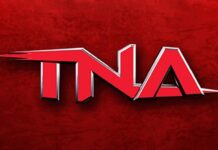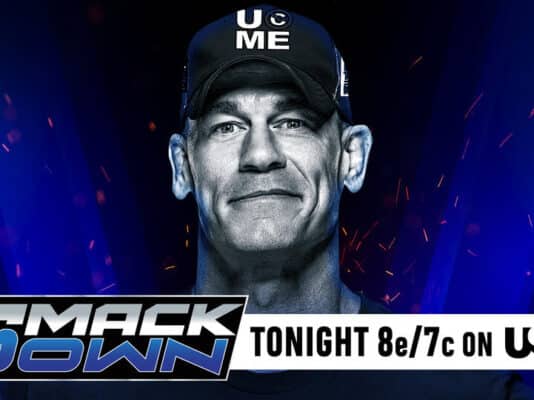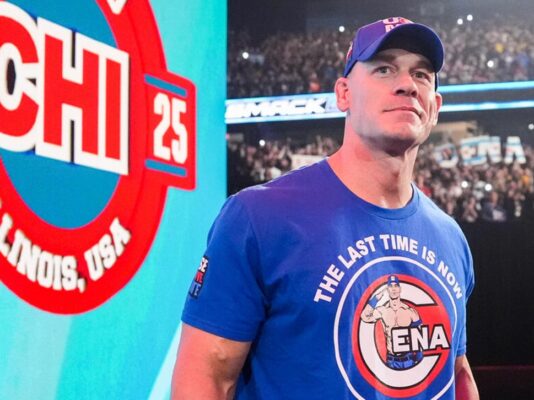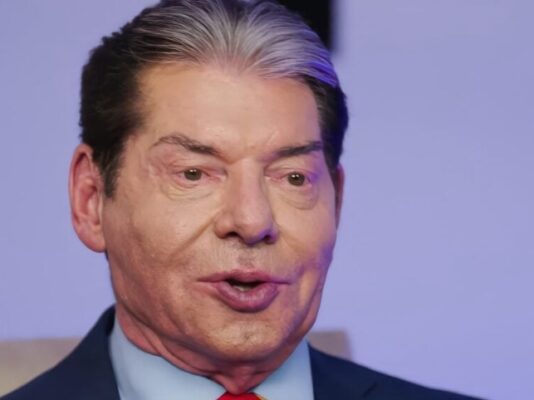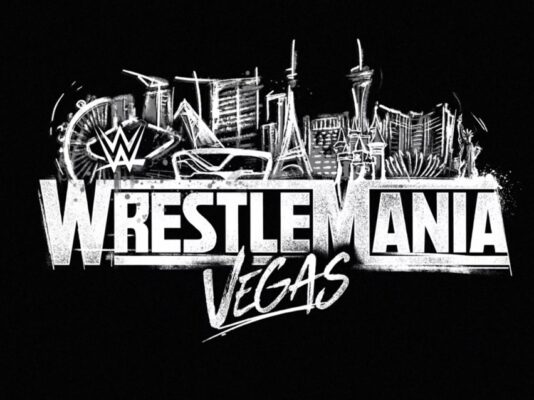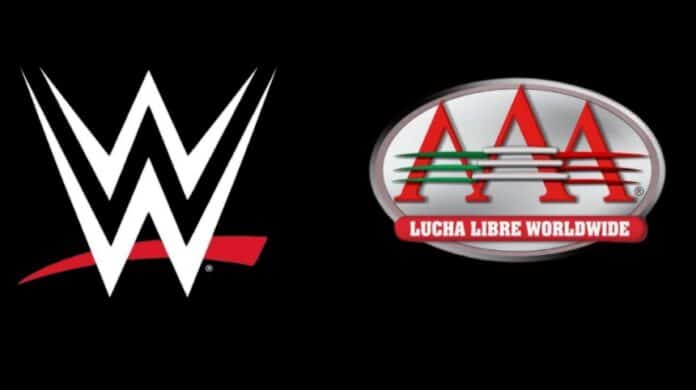
Just a few weeks ago, in the midst of the lucrative Wrestlemania 41 events in Las Vegas, WWE brass surprised the professional wrestling world when it was announced that the TKO corporation bought the AAA Lucha Libre organization, one of the biggest lucha leagues in Mexico, with a 30-year history that undoubtedly had a major impact on the direction of the industry through a ripple effect over those three decades.
Originally named EMLL, the CMLL group, which is the other major lucha libre group in Mexico, is the oldest promotion in the world with more than 80 years of lineage behind it. AAA was founded by the late Antonio Pena as an upstart group in 1992. Absolutely legendary talent either got their start or honed their craft to be ready for bigger stages in the Pena group during that era. Rey Mysterio Jr., Psychosis, Juvi, and other enthusiastic youngsters cut their teeth under Pena. Names like Konnan, Perro Aguayo, Eddie Guerrero, and Art Barr did some of their most legendary work in AAA. As an example of the ripple effect, after Los Gringos Locos had a legendary mask vs. hair match against Octagon and El Hijo Del Santo at the When Worlds Collide pay-per-view, which was broadcasted by WCW, in 1994, it opened the door for Eddie to get the call from ECW in 1995. That stint in Philadelphia led to his eventual opportunity in World Championship Wrestling not long after that. There was speculation that the pair were supposed to join ECW as a team, and Art Barr mentioned the Philadelphia=based organization in a post-match interview, but sadly, Barr passed away from an accidentally drug overdose just two weeks after the famous bout in Mexico.
The fact that AAA started as a spinoff from CMLL isn’t that surprising, as that type of scenario has happened throughout wrestling history. However, it wasn’t ever truly known how far that initial surge in popularity could’ve taken the new company because when the peso crashed in 1995, it devastated the entire country, including the pro wrestling business, which had traditionally been a part of the fabric of Hispanic culture. Konnan’s dispute with management in 1996 led to an exodus of many of the young talent mentioned earlier to WCW, which didn’t help matters either.
After Pena passed away in 2006, his brother-in-law, Joaquin Roldan ran the promotion with other members of the family until his passing in 2017. As seen on the Wrestlemania kickoff show, Dorian Pena, the founder’s nephew, is one of the current figureheads of the organization. There were a few numbers thrown around online, but nothing was confirmed. A few reports speculated that TKO paid tens of millions of dollars for the lucha company, which might seem outlandish, given the current state of the organization, but it’s not simply buying the rights to an promotion and its assets, including the tape library, which can be monetized in a variety of ways. Perhaps, the most important portion of the purchase is that the WWE bought a foothold in Mexico, a foothold that they’ve tried for a few decades to establish to capitalize on the Hispanic demographic in the United States. Furthermore, we’ve seen since the WWE/UFC merger that Endeavors put a true focus on globalizing the product, which was one of the main points of the Netflix deal, and with this expansion into the lucha libre market, it targets the Hispanic market in America in a more productive way, and it also creates the opportunity to generate revenue in Mexico to a level that isn’t possible with a standalone WWE product.
There are many different layers to this story, as it’s a very ambitious step and there are a multitude of factors, both within and beyond WWE’s control, that could play a critical role in the potential success of the project.
First and most importantly, TKO can’t simply try to brand AAA as a version of NXT Mexico, as besides the fact that it would label the group as secondary, it was proven in the past that Mexican audiences want their style of lucha, not an Americanized spinoff. If this expansion is only going to put the WWE product in Mexico on a more regular basis, it will flop and do considerable damage to the status of lucha in the native country. As trivial as this might sound, TKO brass are going to have to resist the temptation to take a paint-by-the-numbers approach with it, and truly run AAA as a separate entity from the WWE brand in America. Sure, there are several positives that can be borrowed from the WWE umbrella such as the production and distribution, as well as the crop of Hispanic talent under WWE contract that can be sent to bolster AAA shows, but in terms of overall presentation, this must be kept true to the traditional lucha vision because that’s the reason that AAA has a following in the first place.
The problem is, the WWE as a whole hasn’t ever allowed something like this to be run as its own commodity since it was much easy to copy and paste a WWE format than to allow something that the corporation didn’t originally create to flourish under the WWE banner. That being said, hopefully, those at TKO are smart enough to realize that the revenue is all going into the same pocket so there’s no need to shoehorn the WWE philosophy onto the AAA product. Yes, I understand that modern AAA has some level of American influence, but that’s more of the evolution of the business itself, in terms of styles blending over the course of time rather than a direct effort to reshape the overall presentation.
This is where the subject gets exponentially more complicated, both with the structure of the AAA group going forward, and a number of outside factors. One of the biggest questions is, who is going to run the Mexican product? Clearly, AAA needs to generate more revenue, which is why John Layfield got involved as an investor in recent years, and it’s doubtful that TKO would pay millions of dollars to purchase it just to pick up the tab while the Pena family continues to run the company. I wouldn’t be surprised if Dorian Pena and a few of the other current staff stay involved with the local promotional efforts, but the major decisions will probably be made by someone from the TKO side. Konnan is currently involved in the office, but is he the right choice to run a project at this level? Furthermore, he was on rocky terms with the WWE for decades because of his exit after the Max Moon gimmick was designed so were those fences mended?
Rey Mysterio is still an active wrestler and doesn’t seem to be ready to retire yet, but would he be someone that would be willing to run the AAA venture in the future? Basically, there’s not anyone in the WWE office right now that is truly familiar enough with the tends and culture of lucha libre to run a pure Mexican project so it will be interesting to see who is put in place to make the key decisions for the promotion in the future.
As far as factors outside of their control, it’s one of the issues that can complicate international business for any corporation and might be a good reason for WWE brass run AAA as a separate commodity. With the political tension and the uncertainty around the global economy, it wouldn’t be too surprising if business for the WWE in the United States is strong, but there could be periods of shrinking revenue in Mexico. This is where an expansion of this nature goes beyond just the number of tickets sold at the box office or the amount of star ratings, it’s going to be a difficult balancing act to try to jump start a new era of AAA if the Mexican economy takes a hit as far as the tariffs that have made the news recently.
Granted, there are peaks and valleys with any economy, but again, it’s something that the office will have to keep in mind, which is why they can’t paint with a broad brush if they want this to be a successful venture. Something that works in America might not work in Mexico so they can send stars to add a sizzle, but still have to tailor the shows to the specific audience.
One of the ways to tailor the presentation is, where are these show going to take place? Of course, the WWE has announced the Worlds Collide show in Los Angeles in June as a nod to the original pay-per-view, but when AAA is running full-scale under the direction of TKO, are they still going to tour Mexico?
As beautiful, passionate, and vibrant as Hispanic culture is, the very disappointing reality is that the drug cartels and violence in the country remain a real problem. Is the WWE truly prepared to navigate those waters, particularly with how to run events safely in the country? It goes without saying that there would be security concerns with sending talent to Mexico. Rob Van Dam mentioned during a Kayfabe Commentaries interview that when he worked in the country as a part of a working agreement that TNA had with AAA, there were specific efforts to keep the talent safe with direct transportation everywhere they traveled while they were there. Regardless of what side of the fence someone is on of the immigration debate, there’s a reason that people have sought to pursue opportunities in the United States for decades so the instability of Mexico is something that has to be taken into account by TKO.
Along those same lines, the state of lucha at various times has reflected the instability of the country. There were times that main event talent would no-show or there would be other disputes that would disrupt business. Because of numerous factors between the shady business practices to the dangers of the country mentioned previously, Mexico isn’t usually a destination for talent, at least not in the modern era. In fact, it was a place where talent that nobody else would sign attempted to get work in recent years. Trash like Teddy Hart, Tessa Blanchard, and Marry Scurll went to Mexico after they burned a bridge everywhere else.
It’s probably a good thing that with a WWE structure in place, most of the shady lucha tactics that hindered business in the past can be eliminated from the landscape of AAA. For example, Alberto Del Rio, who was the AAA champion, was released from his contract with the lucha group just a few days after the TKO purchase was announced. In recent years, AAA has also had a terrible track record with title defenses or belts being vacated so it will probably be beneficial to have a more solid direction behind the company under the WWE banner.
That solid direction is probably the biggest upside of this purchase for AAA, it can bring the state-of-the-art production value and distribution to lucha libre. Make no mistake about it, the WWE can put the money into the promotion to make it look as professional and as marketable as possible. Will there be a weekly AAA show on Netflix? One thing is for sure, when it’s done well, lucha libre is one of the most visually impressive styles of professional wrestling so if it’s packaged right, it’s very possible that this acquisition could bring lucha to the biggest audience possible.
The potential pitfalls of this buy out might be bigger than even the upside. If the WWE tries to basically label AAA as just another WWE brand and takes away the true lucha libre elements, it will have a drastic effect on the sport in Mexico, as it would more or less take away one of the pillars of the industry in the country, and we all saw how the business declined in America after WCW closed. This could either be a huge positive or a huge negative for lucha libre as a genre, and it remains to be seen how it will unfold for the industry.
What do you think? Share your thoughts, opinions, feedback, and anything else that was raised on Twitter @PWMania and Facebook.com/PWMania.
Until next week
-Jim LaMotta
E mail [email protected] | You can follow me on Instagram, Facebook, & Threads @jimlamotta89


